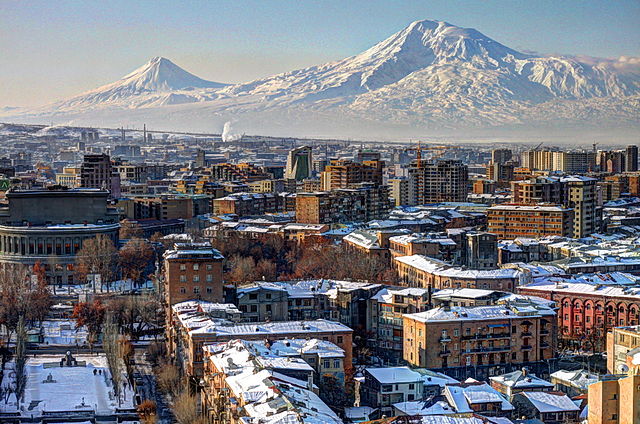The history of Armenia covers the topics related to the history of the Republic of Armenia, as well as the Armenian people, the Armenian language, and the regions of Eurasia historically and geographically considered Armenian.
Yerevan with Mount Ararat in the background
A 5500-year-old leather shoe—the oldest shoe in the world—was discovered in the Areni cave in Armenia. See Areni-1 shoe.
Bronze Age astronomical observatory Zorats Karer (also known as Karahunj).
The natural borders of the Armenian plateau and its peripheral regions according to H. F. B. Lynch (1901).
The Armenian highlands is the most central and the highest of the three plateaus that together form the northern sector of West Asia. Clockwise starting from the west, the Armenian highlands are bounded by the Anatolian plateau, the Caucasus, the Kura-Aras lowlands, the Iranian Plateau, and Mesopotamia. The highlands are divided into western and eastern regions, defined by the Ararat Valley where Mount Ararat is located. Western Armenia is nowadays referred to as eastern Anatolia, and Eastern Armenia as the Lesser Caucasus or Caucasus Minor, and historically as the Anti-Caucasus, meaning "opposite the Caucasus".
The Armenian highlands near the Iran–Turkey border
Satellite image
Mount Artos, Lake Van, from Akhtamar Island
Lake Akdoğan








